
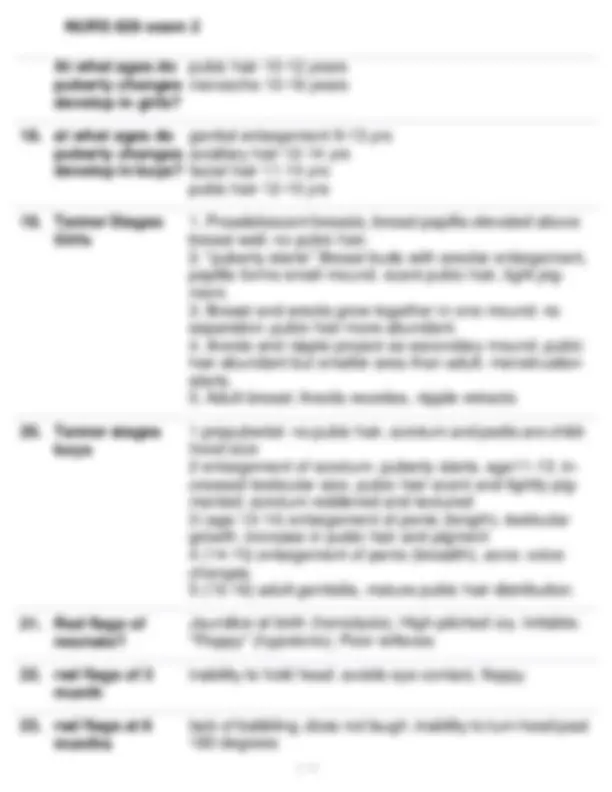
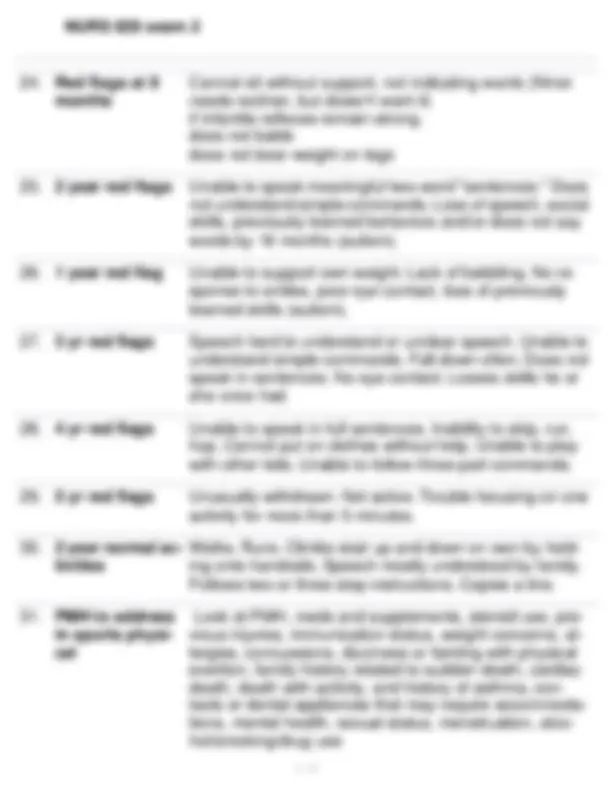
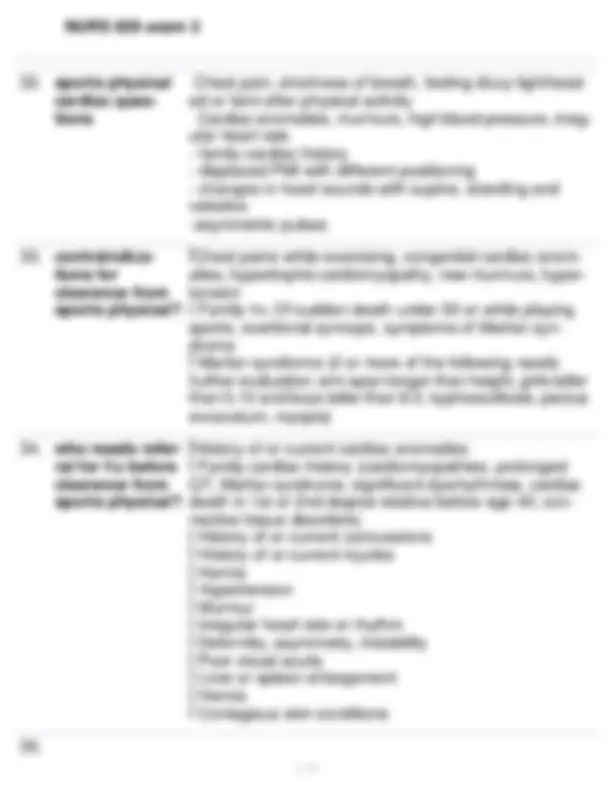
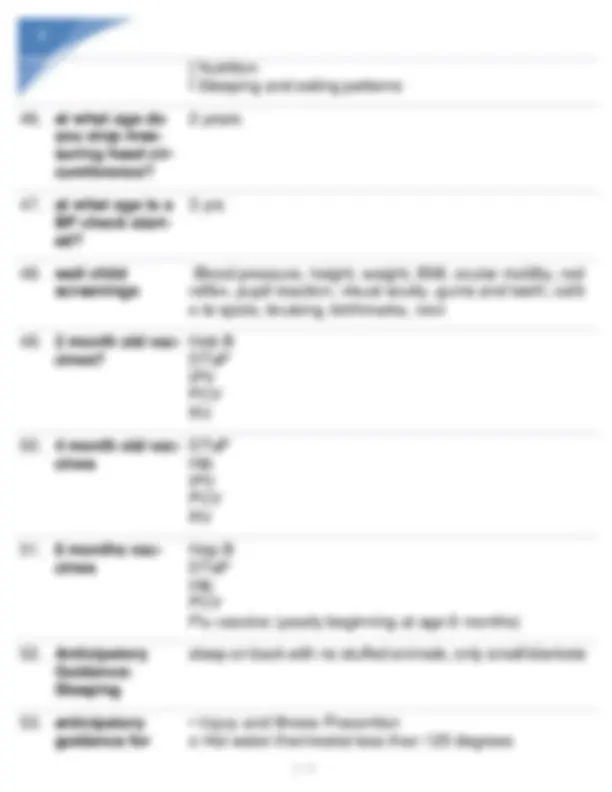
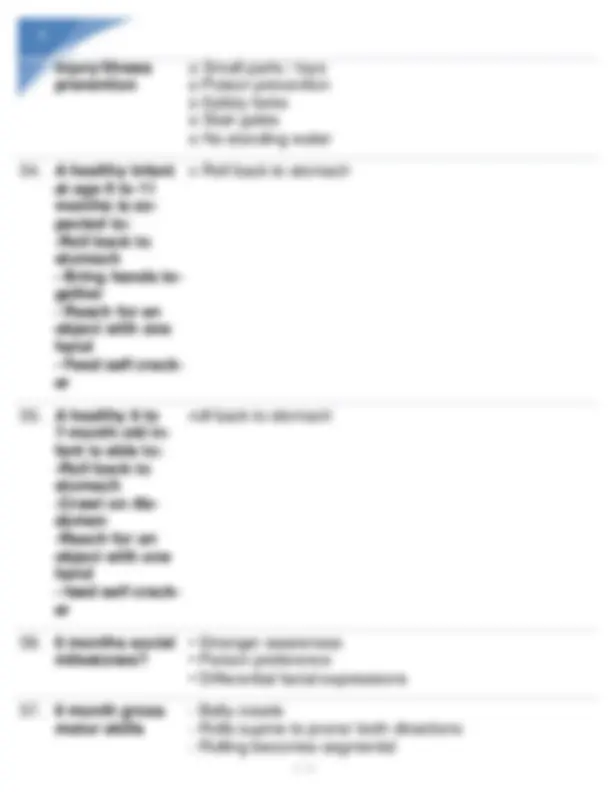
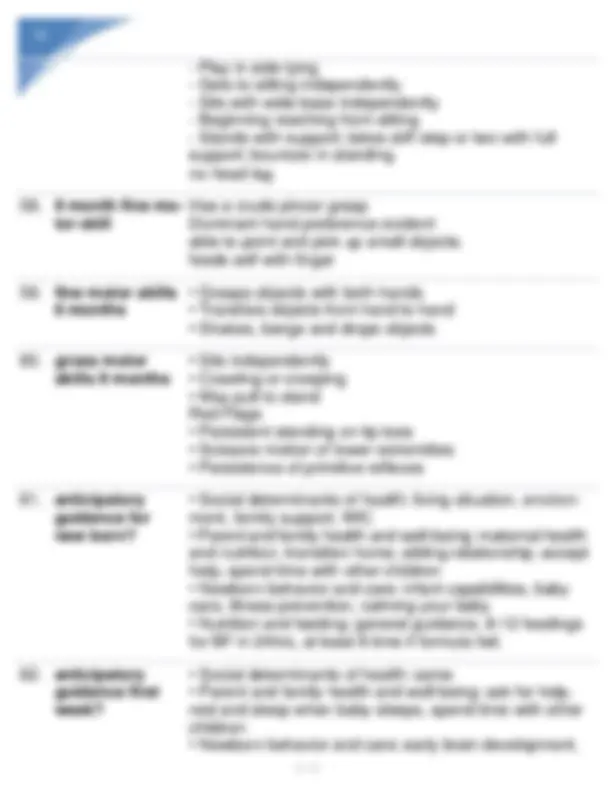
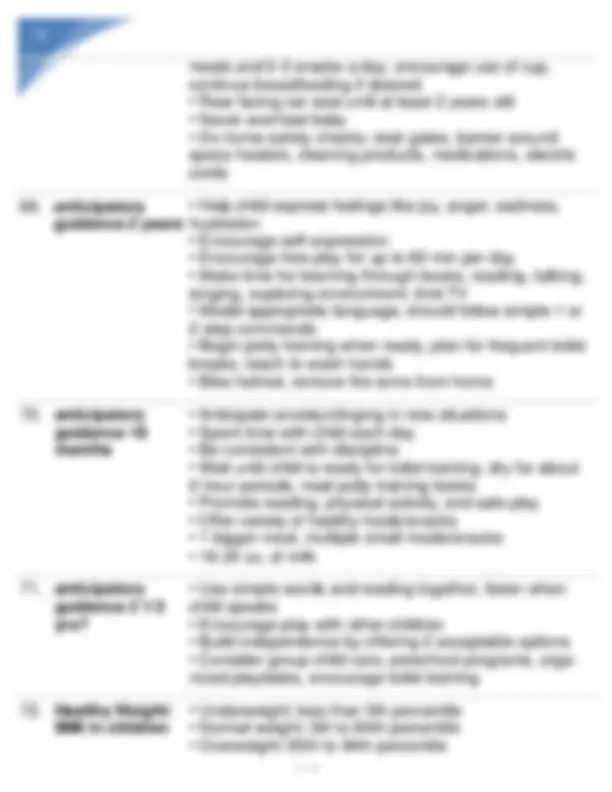
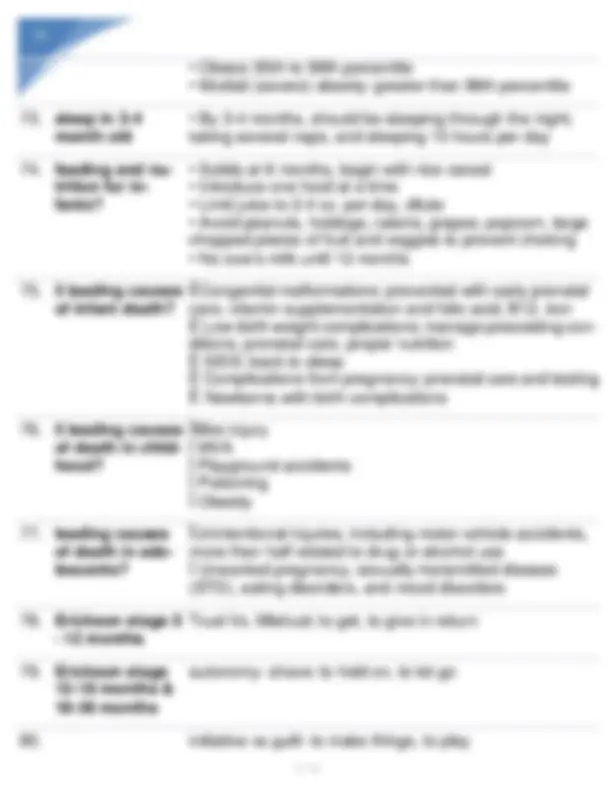
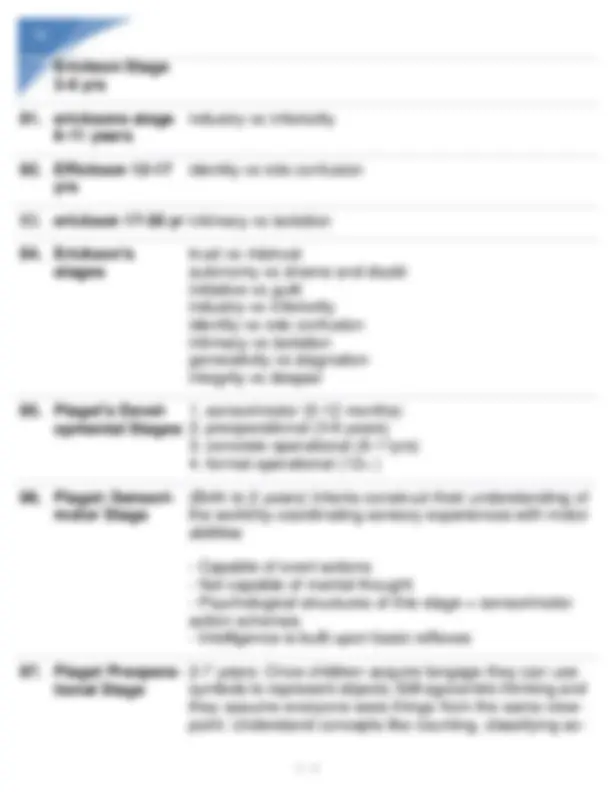
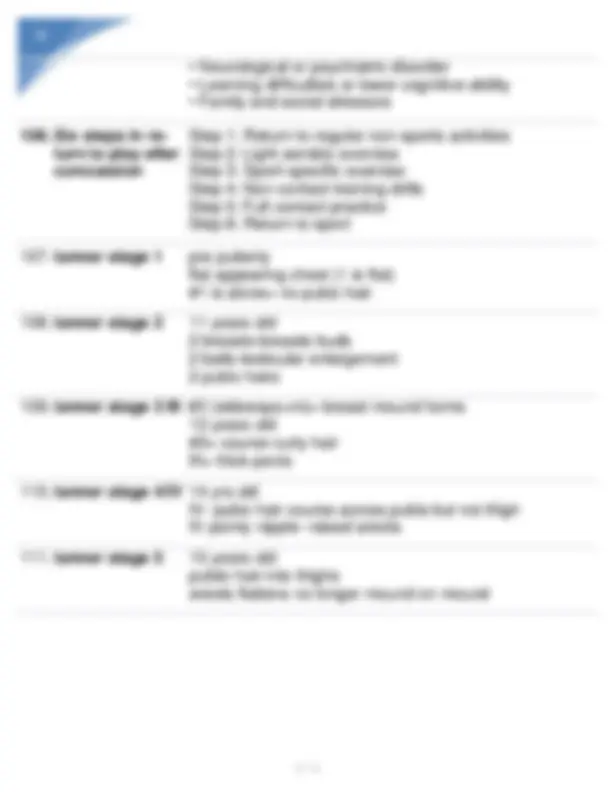


Study with the several resources on Docsity

Earn points by helping other students or get them with a premium plan


Prepare for your exams
Study with the several resources on Docsity

Earn points to download
Earn points by helping other students or get them with a premium plan
Community
Ask the community for help and clear up your study doubts
Discover the best universities in your country according to Docsity users
Free resources
Download our free guides on studying techniques, anxiety management strategies, and thesis advice from Docsity tutors
NURS 629 exam 2 verified solutions|2024
Typology: Exams
1 / 18

This page cannot be seen from the preview
Don't miss anything!











NURS 629 exam 2 P a g e 1 | 18
1. Weight changes **in 1st year of life
NURS 629 exam 2 P a g e 2 | 18
9. why is acid re- flux common in **infants?
NURS 629 exam 2
NURS 629 exam 2
42. what information is included in history of 2 year **old?
Ï Nutrition Ï Sleeping and eating patterns
adjustment to home, calming, when to call MD, illness prevention, sing/read/talk to baby, avoid TV/Digital me- dia, help baby wake for feedings/diaper changes/undress- ing, calm baby by stoking head or gentle rocking, never hit/shake baby, take temp rectally, not by ear or skin, wash hands, avoid sun
cording to similarity, and past-present-future but focused on present and concrete rather than abstract.
No honey before ?
18 months